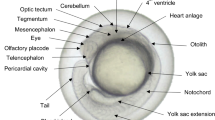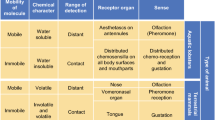Abstract
17α-ethinylestradiol (EE2), the female contraceptive pill, has been detected in mediterranean coasts where seahorse populations, Hippocampus guttulatus, live. Low environmental concentrations have the potential to disrupt growth but also endocrine metabolism, and this imbalance is all the more critical in early life stage. To investigate the impact of EE2 in reared seahorses, we exposed aged 2 months and sexually undifferentiated seahorses to an environmental concentration of 21 ng/L of EE2 for a period of 30 days. EE2 exposure led to a 19% reduction in weight, but also a mortality rate of 27%. This exposure predicted demasculinization of male individuals with a late onset of secondary sexual characteristics. EE2 exposure led to an increase of the free androgen index, but significant reductions of estradiol and testosterone in males were observed. This low estrogen concentration seemed to impact the positive feedback on luteinizing hormone (LH) with a decrease in LH production. Added to this, synthetic estrogen had a negative impact on the production and the release of follicle-stimulating hormone. Contrary to all expectations, females demonstrated a significant decrease in vitellogenin, following exposure to EE2 at 21 ng/L, while no changes were detected in males. This first study on the European long-snouted seahorses confirmed the deleterious impact of the female contraceptive pill with a real impact on growth, sexual differentiation, and maturation in young immature seahorses.







Similar content being viewed by others
References
Aris AZ, Shamsuddin AS, Praveena SM (2014) Occurrence of 17α-ethynylestradiol (EE2) in the environment and effect on exposed biota: a review. Environ Int 69:104–119
Babin PJ, Carnevali O, Lubzens E, Schneider WJ (2007) Molecular aspect of oocyte vitellogenesis in fish. Springer Chapter 2: The Fish Oocyte: From Basic Studies to Biotechnological Applications, pp 39–76
Cavaco JEB, Bogerd J, Goos H, Schulz RW (2001) Testosterone inhibits 11-Ketotestosterone-induced spermatogenesis in African catfish (Clarias gariepinus). Biol Reprod 65:1807–1812
Chang CF, Chen MR (1990) Fluctuation in sex steroids and sex steroid-binding protein during the development and annual cycle of the male common carp, Cyprinus carpio. Comp Biochem Physiol 97A:565–568
Colli-Dula RC, Martyniuk CJ, Kroll KJ, Prucha MS, Kozuch M, Barber DS, Denslow ND (2014) Dietary exposure of 17-alpha ethinylestradiol modulates physiological endpoints and gene signaling pathways in female largemouth bass (Micropterus salmoides). Aquat Toxicol 156:148–160
Déchaud H, Ravard C, Claustrat F, de la Perrière AB, Pugeat M (1999) Xenoestrogen interaction with human sex hormone-binding globulin (hSHBG). Steroids 64(5):328–334
Duffy TA, Iwanowicz LR, McCormick SD (2014) Comparative responses to endocrine disrupting compounds in early life stage of Atlantic salmon, Salmo salar. Aquat Toxicol 152:1–10
Faleiro F, Almeida AJ, Ré P, Narciso L (2016) Size does matter: an assessment of reproductive potential in seahorses. Anim Reprod Sci 170:61–67
Filby AL, Thorpe KL, Maack G, Tyler GR (2007) Gene expression profiles revealing the mechanisms of anti-androgen and estrogen-induced feminization in fish. Aquat Toxicol 81:219–231
Flores-Valverde AM, Horwood J, Hill EM (2010) Disruption of the steroid metabolome in fish caused by exposure to the environmental estrogen 17α-ethinylestradiol. Environ Sci Technol 44:3552–3558
Foran CM, Peterson BN, Benson WH (2002) Transgenerational and developmental exposure of Japanese Medaka (Oryzias latipes) to ethinylestradiol results in endocrine and reproductive differences in the response to ethinylestradiol as adults. Toxicol Sci 68:389–402
Foster SJ, Vincent ACJ (2004) Life history and ecology of seahorses: implications for conservation and management. J Fish Biol 65:1–61
Foster SJ, Wiswedel S, Vincent ACJ (2016) Opportunities and challenges for analysis of wildlife trade using CITES data-seahorses as a case study. Aquat Conserv 26:154–172
Gale WL, Patino R, Maule AG (2004) Interaction of xenobiotics with estrogen receptors α and β and a putative plasma sex hormone-binding globulin from channel catfish (Ictalurus punctatus). Gen Comp Endocrinol 136:338–345
Gazola R, Borella MI (1997) Plasma testosterone and 11-ketotestosterone levels of male pacu Piaractus mesopotamicus (Cypriniformes, Characidae). Braz J Med Biol Res 30:1485–1487
GoksØyr A (2006) Endocrine disruptors in the marine environment: mechanisms of toxicity and their influence on reproductive processes in fish. J Toxicol Environ Health 69:175–184
Golshan M, Hatef A, Zare A, Socha M, MillaS GG, Fontaine P, Sokołowska-Mikołajczyk M, Habibi HR, Alavi SMH (2014) Alternations in neuroendocrine and endocrine regulation of reproduction in male goldfish (Carassius auratus) following an acute and chronic exposure to vinclozolin, in vivo. Aquat Toxicol 155:73–83
González A, Fernandino JI, Hammond GL, Somoza GM (2017) Sex hormone binding globulin: expression throughout early development and adult pejerrey fish, Odontesthes bonariensis. Gen Comp Endocrinol 247:205–214
Hammond GL (2011) Diverses roles for sex hormone-binding globulin in reproduction. Biol Reprod 85:431–441
Kidd KA, Blanchfield PJ, Mills KH, Palace VP, Evans RE, Lazorchak JM, Flick RW (2007) Collapse of a fish population after exposure to a synthetic estrogen. Proc Natl Acad Sci U S A 104:8897–8901
Länge R, Hutchinson TH, Croudace CP, Siegmund F, Schweinfurth H, Hampe P, Panter GH, Sumpter JP (2001) Effects of the synthetic estrogen 17α-ethinylestradiol on the life-cycle of the fathead minnow (Pimephales promelas). Environ Toxicol Chem 20:1216–1227
Lange A, Paull GC, Coe TS, Katsu Y, Urushitani H, Iguchi T, Tyler CR (2009) Sexual reprogramming and estrogenic sensitization in wild fish exposed to ethinylestradiol. Environ Sci Technol 43:1219–1225
Leet JK, Gall HE, Sepùlveda MS (2011) A review of studies on androgen and estrogen exposure in fish early life stages: effects on gene and hormonal control of sexual differentiation. J Appl Toxicol 31:379–398
Leet JK, Sassman S, Amberg JJ, Olmstead AW, Lee LS, Ankley GT, Sepùlveda MS (2015) Environmental hormones and their impacts on sex differentiation in fathead minnows. Aquat Toxicol 158:98–107
Luetjens CM, Weinbauer GF (2012) Testosterone: biosynthesis, transport, metabolism and (non-genomic) actions. Cambridge Medecine: Chapter 2 in Testosterone: action, deficiency, substitution, pp 15–32
Meng SL, Qiu LP, Hu GD, Fan LM, Song C, Zheng Y, Wu W, Qu JH, Li DD, Chen JZ, Xu P (2017) Effect of methomyl on sex steroid hormone and vitellogenin levels in serum of male tilapia (Orochromis niloticus) and recovery pattern. Environ Toxicol 32:1869–1877
Miguel-Queralt S, Blazquez M, Piferrer F, Hammond GL (2007) Sex hormone-binding globulin expression in sea bass (Dicentrarchus labrax L.) throughout development and the reproductive season. Mol Cell Endocrinol 276:55–62
Nenciu MI, Coatu V, Oros A, Rosioru D, Tiganus D, Rosoiu N (2014) Pollutant bioaccumulation in the long-snouted seahorse at the Romanian coast. J Environ Prot Ecol 15:1650–1659
Otero-Ferrer F, González JA, Freitas M, Araújo R, AzevedoJMN HWV, Tuya F, Haroun R (2017) When natural history collections reveal secrets on data deficient threatened species: atlantic seahorses as a case study. Biodivers Conserv 26:2791–2803
Parrott JL, Blunt BR (2005) Life cycle exposure of fathead minnows (Pimephales promelas) to an ethinylestradiol concentration below 1 ng/L reduces egg fertilization success and demasculinizes males. Environ Toxicol 20:131–141
Pasquier G, Rives N, Bouzouita A, Caremel R, Sibert L (2008) Comparaison des taux d’estradiol et de testostérone dans le sang périphérique et dans le sang spermatique chez les patients avec azoospermie sécrétoire. Prog Urol 18:663–668
Prévot D’Alvise N, Pierre S, Coupé S, Gaillard S, Richard S, Aubert J, Grillasca JP (2011) The cutting edge of endocrine disrupting chemicals in freshwater fishes. Nova Science Publishers: Advances in Environmental Research 21:301–330
Qin F, Wang X, Liu S, Zheng Y, Li M, Zhang Y, Wang Z (2014) Gene expression profiling of key genes in hypothalamus–pituitary–gonad axis of rare minnow Gobiocypris rarus in response to EE2. Gene 552:8–17
Saez JM, Lejeune H, Avallet O, Habert R, Durand P (1995) Le contrôle des fonctions différenciées des cellules de Leydig. Med Sci 11:547–553
Sambroni E, Lareyre JJ, Le Gac F (2013) Fsh controls gene expression in fish both independently of and through steroid mediation. PLoS One 8:1–14
Sárria MP, Santos MM, Reis-Henriques MA, Vieira NM, Monteiro NM (2011) The unpredictable effects of mixtures of androgenic and estrogenic chemicals on fish early life. Environ Int 37:418–424
Scholz S, Mayer I (2008) Molecular biomarkers of endocrine disruption in small model fish. Mol Cell Endocrinol 293:57–70
Schulz RW, Miura T (2002) Spermatogenesis and endocrine regulation. Fish Physiol Biochem 26:43–56
Shved N, Berishvili G, Baroillier JF, Segner H, Reinecke M (2008) Environmentally relevant concentrations of 17α-ethinylestradiol (EE2) interfere with the growth hormone (GH)/insulin-like growth factor (IGF)-I system in developing bony fish. Toxicol Sci 106:93–102
Tollefsen KE, Meys JFA, Fryldenlund J, Stenersen J (2002) Environmental estrogens interact with and modulate the properties of plasma sex steroid-binding proteins in juvenile Atlantic salmon (Salmo salar). Mar Environ Res 54:697–701
Vincent ACJ, Foster SJ, Koldewey HJ (2011) Conservation and management of seahorses and other Syngnathidae. J Fish Biol 78:1681–1724
Weinbauer G.F, Luetjens C.M, Simoni M, Nieschlag E (2010) Physiology of Testicular Function. Springer, Berlin: Andrology, pp 11–59
Windahl SS (2011) The impact of 17α-ethinylestradiol on roach (Rutilus rutilus) growth. Rapport pour l’obtention du titre « Bachelor C » de l’université de Suéde 25 pages
Wise A, O’Brien K, Woodruff T (2010) Are oral contraceptives a significant contributor to the estrogenicity of drinking water? Environ Sci Technol 45:51–60
Xu H, Yang J, Wang Y, Jiang Q, Chen H, Song H (2008) Exposure to 17α-ethinylestradiol impairs reproductive functions of both male and female zebrafish (Danio rerio). Aquat Toxicol 88:1–8
Yaron Z, Levavi-Sivan B (2011) Endocrine regulation of fish reproduction. Genome Environ: Encycl Fish Physiol 2:1500–1508
Funding
This study was funded by the Agence de l’eau (France)(APP 7212015 023 OSB).
Author information
Authors and Affiliations
Corresponding author
Ethics declarations
Conflict of interest
The authors declare that they have no conflict of interest.
Additional information
Responsible Editor: Philippe Garrigues
Publisher’s note
Springer Nature remains neutral with regard to jurisdictional claims in published maps and institutional affiliations.
Rights and permissions
About this article
Cite this article
D’Alvise, N.P., Richard, S., Aublanc, P. et al. When male seahorses take the female contraceptive pill .... Environ Sci Pollut Res 27, 16528–16538 (2020). https://doi.org/10.1007/s11356-020-08152-1
Received:
Accepted:
Published:
Issue Date:
DOI: https://doi.org/10.1007/s11356-020-08152-1




